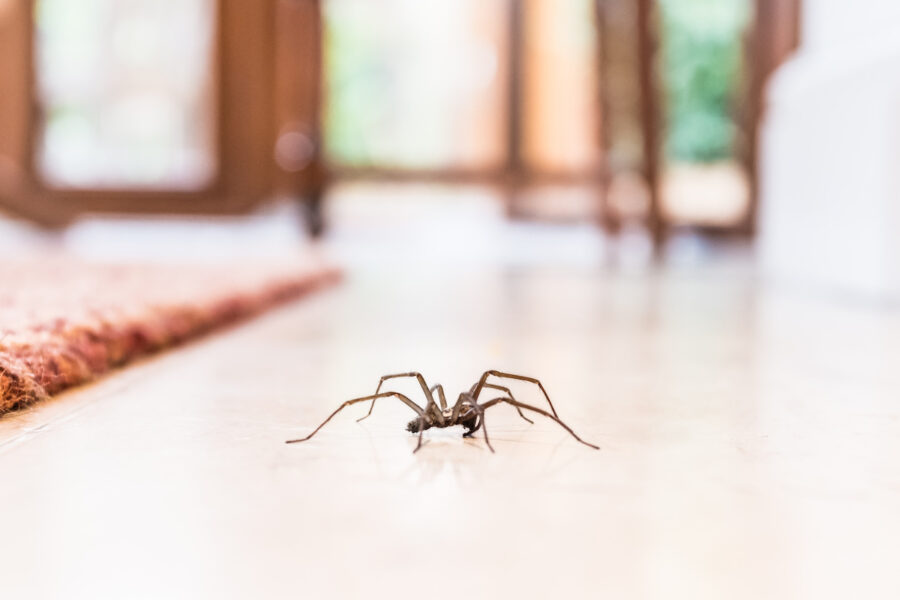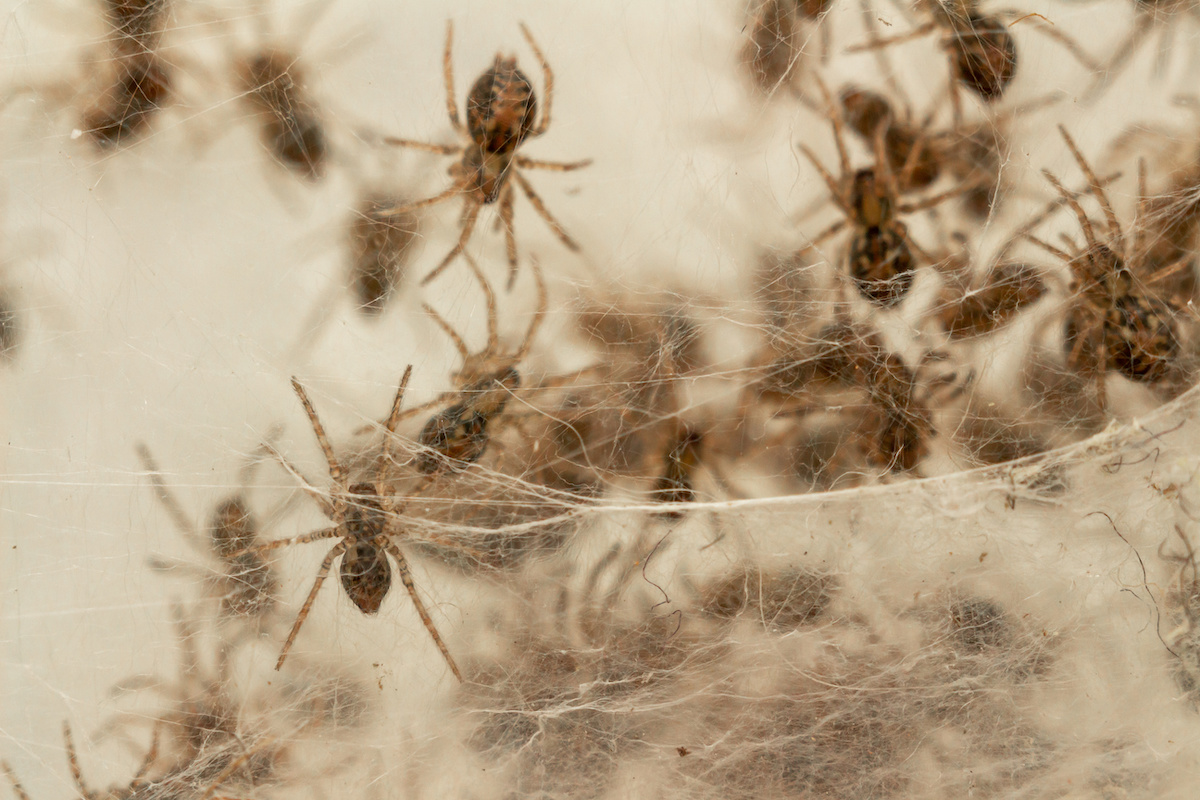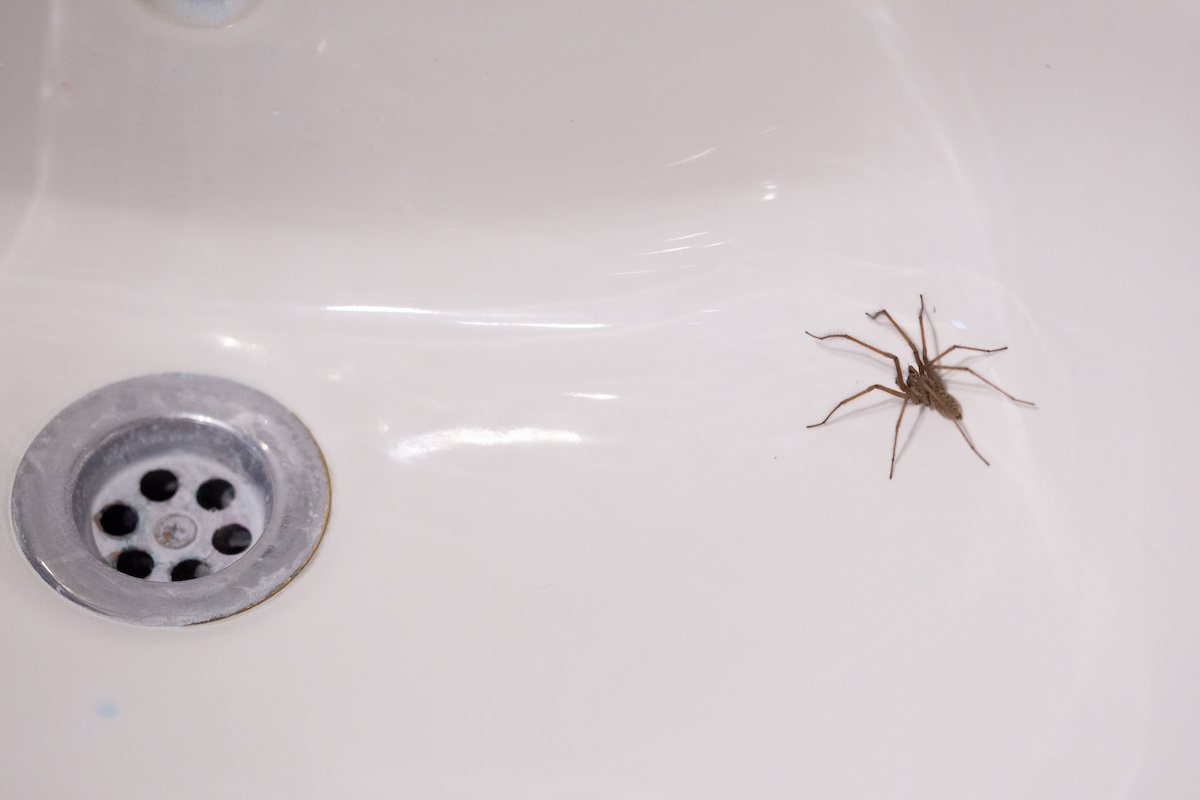
As the leaves begin to change and the air turns crisp, you might start to notice an unwelcome phenomenon in your home: spiders. While these eight-legged critters may be unwelcome house guests, seasonal spider invasions are common in the fall.
At James River Pest Solutions, we often receive calls from concerned homeowners wondering why they see more spiders during this time of year and how to keep them at bay.
In this article, we’ll explore the reasons behind seasonal spider invasions, what attracts spiders to your home, and how you can protect your living space from these creepy crawlies.
Spider Behavior: Why Fall Brings More Spiders
Spiders are a natural part of the ecosystem and play a crucial role in controlling insect populations. However, their behavior is influenced by several factors, including:
- Temperature
- Humidity
- Prey availability
During the fall, a combination of environmental changes and biological instincts drives spiders indoors, leading to what many people perceive as an “invasion.”

1. Mating Season
One of the primary reasons you see more spiders in the fall is that it’s their mating season. As the temperatures drop, male spiders become more active in their search for a mate. This increased activity often leads them out of their usual hiding spots and into areas where they are more visible to humans, such as inside homes.
Male spiders may wander into your home through areas such as open windows, doors, or cracks in the foundation as they search for female spiders, which tend to stay hidden in webs or dark corners.
2. Temperature Changes
As summer transitions into fall, the cooler outdoor temperatures drive many spiders indoors in search of warmth. While some species of spiders prefer to remain outdoors, others are more adaptable and will seek out the warmer, more stable environment of your home.
Basements, attics, and crawl spaces are particularly attractive to spiders because these areas often maintain a more consistent temperature, providing an ideal environment for them to thrive.
3. Decreased Prey Availability Outdoors
During the warmer months, spiders have an abundance of insects to feed on outside. However, as temperatures drop and insect populations decline, spiders may move indoors where they can find a more reliable food source.
Your home offers an environment where flies, ants, and other small insects are still active, making it an appealing hunting ground for spiders.
Common Types of Spiders You May Encounter in the Fall
Not all spiders are the same, and different species may have different reasons for entering your home. Here are some of the most common spiders you might encounter during the fall season:
1. House Spiders
House spiders are small, brown spiders that are commonly found in homes throughout the year. However, their activity tends to increase in the fall as males search for mates. These spiders typically build messy, tangled webs in corners, basements, and other undisturbed areas. While house spiders are generally harmless, their presence can be unsettling.
2. Wolf Spiders
Wolf spiders are large, fast-moving spiders that do not build webs to catch their prey. Instead, they hunt insects by chasing them down.
In the fall, wolf spiders may enter homes in search of warmth and food. Although they look intimidating due to their size, wolf spiders are not aggressive and their bites are not dangerous to humans.
3. Brown Recluse Spiders
The brown recluse spider is a venomous spider that is commonly found in the southeastern and central United States. They are more active in the fall and may enter homes in search of shelter.
Brown recluse spiders prefer dark, undisturbed areas such as closets, basements, and attics. Their bites can cause serious medical issues, so it’s important to be cautious if you suspect a brown recluse infestation.
4. Orb-Weaver Spiders
Orb-weaver spiders are known for their intricate, wheel-shaped webs that are often found in gardens, around windows, and in doorways. These spiders are typically harmless and prefer to stay outdoors.
However, in the fall, they may move closer to your home or even indoors in search of insects that are attracted to lights and warmth.
How Spiders Enter Your Home
Spiders are skilled at finding their way into homes, often through small cracks, gaps, and openings that go unnoticed by homeowners. Understanding how they enter your home is the first step in preventing a spider infestation.
1. Gaps Around Windows and Doors
Spiders can easily slip through gaps around windows and doors, especially if the weatherstripping or caulking is worn or damaged. They are also attracted to light sources near windows and doors, where they may find an abundance of insects to prey on.
2. Cracks in the Foundation
Small cracks in your home’s foundation can serve as entry points for spiders. These cracks are often overlooked, but they provide easy access for spiders to enter your basement or crawl space, where they can then make their way into the rest of the house.
3. Openings Around Utility Lines
Utility lines, such as those for plumbing, electrical wiring, and HVAC systems, often pass through walls, creating potential entry points for spiders. If these openings are not properly sealed, then spiders can use them to gain access to your home.
4. Vents and Chimneys
Vents, chimneys, and other openings that lead outside are common entry points for spiders. While these are necessary for ventilation and proper functioning of appliances, they can also provide a pathway for spiders if not properly screened or covered.
Preventing Spider Invasions: What You Can Do
While it’s impossible to completely eliminate spiders from your home, there are several steps you can take to minimize their presence and reduce the likelihood of a spider infestation.
1. Seal Cracks and Gaps
One of the most effective ways to keep spiders out of your home is to seal any cracks and gaps that could serve as entry points. So, inspect the exterior of your home, paying special attention to areas around:
- Windows
- Doors
- Utility lines
- The foundation
Use caulk to seal small cracks and gaps, and consider installing weatherstripping around doors and windows to create a tighter seal.
2. Install Screens
Installing screens on windows, doors, vents, and chimneys can help prevent spiders from entering your home. Make sure the screens are in good condition and free of holes or tears. If you have a fireplace, then consider installing a chimney cap to keep spiders and other pests out.
3. Keep Your Home Clean and Clutter-Free
Spiders search for cluttered, dark undisturbed areas to build their webs. Regularly cleaning and decluttering your home can make it less appealing to spiders. Pay special attention to areas such as basements, attics, closets, and storage areas where spiders are likely to hide.
4. Reduce Outdoor Lighting
Outdoor lighting can attract insects, which in turn attract spiders. To minimize this, use yellow or sodium vapor lights that are less attractive to insects, and keep outdoor lights turned off when not needed. You can also consider moving outdoor lights away from entry points like doors and windows to reduce the likelihood of spiders finding their way inside.
5. Maintain Your Yard
Keeping your yard well-maintained can help reduce the number of spiders around your home. So, trim back shrubs, bushes, and trees that are close to your house, as these can provide a pathway for spiders to enter.
Rake leaves and remove debris regularly, and keep firewood stacked away from the house to reduce hiding spots for spiders.
6. Use Natural Spider Repellents
Some natural substances can repel spiders. Essential oils such as peppermint, tea tree, and lavender can be effective in keeping spiders away. You can create a simple spider repellent by mixing a few drops of essential oil with water in a spray bottle and applying it around entry points and areas where spiders are likely to be found.
7. Regular Pest Control Services
Regular pest control services can help prevent spider infestations and keep your home free from other pests that attract spiders.
At James River Pest Solutions, we offer comprehensive pest control plans that target spiders and other common household pests. Our experienced technicians can assess your home, identify potential entry points, and apply treatments to keep spiders at bay.

When to Call a Professional for Seasonal Spider Invasion
While DIY methods can be effective in preventing spiders, there are times when professional intervention is necessary. If you notice a significant increase in spider activity, then find a large number of webs, or suspect a dangerous species like the brown recluse, it’s important to contact a professional pest control service.
A pest control expert can conduct a thorough inspection of your home, identify the type of spiders present, and implement a targeted treatment plan to eliminate the infestation.
In addition to treating the immediate problem, a professional can also provide advice on how to prevent future infestations and keep your home spider-free.
Enjoying a Spider-Free Fall
As fall approaches, it’s natural to see an increase in spider activity. However with the right precautions, you can keep these unwelcome visitors out of your home. By understanding spider behavior, sealing entry points, maintaining a clean and clutter-free environment, and enlisting the help of professional pest control services, you can enjoy the beauty of the season without the worry of a spider invasion.
At James River Pest Solutions, we’re dedicated to helping homeowners in Richmond, VA, and the surrounding areas protect their homes from pests of all kinds. Whether you’re dealing with a spider problem or want to take preventive measures, our team is here to provide expert advice and effective solutions.
Contact us today to learn more about our pest control services and how we can help you keep your home safe and comfortable year-round.